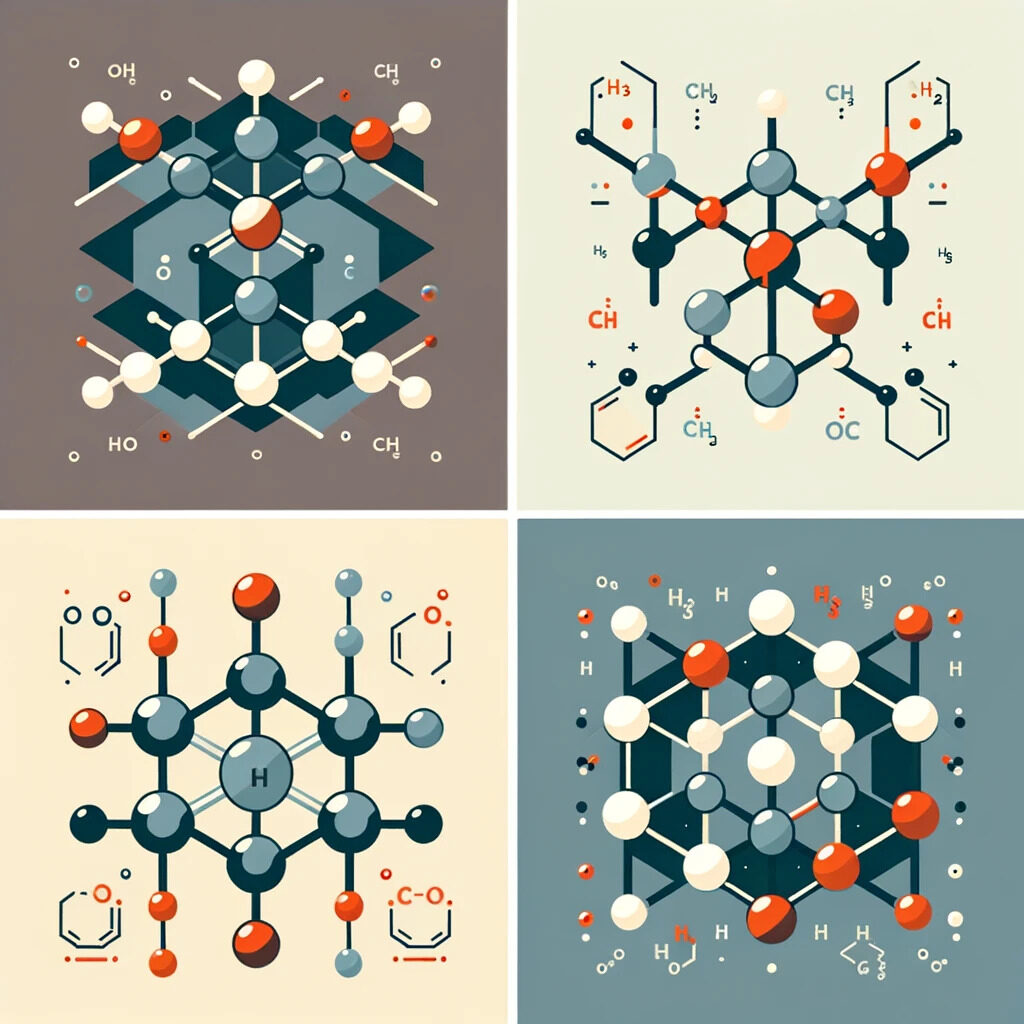
Let’s get into why Lewis structures are a big deal in chemistry. They show us how atoms in a molecule stick together and where electrons hang out. Suppose you’re curious about the basics of chemistry or want to get better at it. In that case, understanding Lewis structures is a great start. They’re not just drawings but the keys to determining molecule shapes and their behavior.
All you need to know about vitamins and minerals.
Lewis Structures: Key Takeaways
In a hurry? Don’t worry. Our critical takeaways on Lewis structures and molecular geometry will give you a quick and easy summary of the main points:
🟠 What Are Lewis Structures? They show us how electrons are arranged around atoms, helping us see the shape and bonding in molecules.
🟠 Why They Matter: With Lewis structures, you can predict how molecules connect and interact, which is essential in chemistry and beyond.
🟠 Real-World Examples: We’ll walk through how to sketch Lewis structures for everyday molecules, like hydrogen sulfide (H₂S) and ammonia (NH₃), and tackle more complex ones like CO₂ and SO₂.
This guide will make Lewis structures clear and straightforward for you. Whether you’re just getting started with chemistry or looking to brush up on your skills, we’ll ensure you understand how to use Lewis structures to unlock the secrets of molecular geometry and bonding. Let’s get you comfortable with drawing and interpreting these structures so you can apply them to classroom learning and real-world chemical problems.
If you find Lewis structures challenging, don’t worry! Personalized tutoring or interactive chemistry lessons make these concepts more straightforward. Explore more chemistry topics and broaden your knowledge with our free World of Chemistry blogs.
What are Lewis Structures and Why Are They Useful?
Lewis structures are like blueprints for molecules. They help us see which atoms are buddies and how electrons are shared or hang around solo, which is handy for guessing how different molecules will react. Think of them as a cheat sheet for predicting everything from how water forms to why certain gases are super important in environmental science.
Lewis Structures Show the Valence Electrons of Atoms and Molecules
At the heart of every Lewis structure is the concept of valence electrons, the outermost electrons of an atom that participate in chemical bonding. By representing atoms as symbols and valence electrons as dots or lines around them, Lewis structures make it easy to see how atoms share or transfer electrons to form bonds. This visualization is key in chemistry because it helps you understand why certain molecules form and how they will react with others.
For example, when drawing the Lewis structure for water (H₂O), you can see how the oxygen atom shares electrons with two hydrogen atoms, explaining the molecule’s stable structure.
Lewis structure of H₂O:
H | H-O | :
Lewis Structures Help Predict the Shape and Bonding of Molecules
Lewis structures reveal more than just electron locations; they hint at a molecule’s shape and how atoms bond. These diagrams help us infer a molecule’s three-dimensional form by showing how electrons spread out to reduce repulsion, which is crucial for understanding interactions at the molecular level, such as how drugs fit into body receptors.
Lewis structures also show bond types—single, double, or triple—informing us about bond strength and the substance’s resulting physical and chemical characteristics. For example, the contrasting shapes and bonds in carbon dioxide (CO₂) and sulfur dioxide (SO₂) lead to their distinct roles in various applications.
Anyone curious about chemistry in daily life can explore simple experiments or consult a chemistry tutor to discover more about the science behind these everyday phenomena.
How to Draw Lewis Structures: Rules and Examples
To tackle Lewis structures, start by counting all the valence electrons; they’re the ones that atoms use to bond. Draw a simple sketch connecting atoms with lines for bonds. Add dots for lone electrons that aren’t in bonds. Sometimes, you’ll need to double or triple up bonds to ensure every atom is happy (or stable). Checking formal charges helps you pick the best structure if you have options.
Let’s break down the rules and apply them to some examples.
Just tally up all the outer electrons from each atom. If you’re dealing with ions, don’t forget to add or subtract electrons based on whether they’re positively or negatively charged.
- Sketch the Skeleton with Single Bonds:
Draw the basic shape of your molecule, linking atoms with single lines for bonds. Stick the least electronegative atom in the middle, but leave hydrogen on the outside. Each line counts for two electrons toward filling up those outer shells.
- Fill in Lone Pairs on the Edges:
Once you’ve got your skeleton, dot in those lone pairs (those electrons that are just hanging out by themselves) on your outer atoms to make sure they all have eight electrons, making them stable. Hydrogen’s cool with just two, though.
- Add Double or Triple Bonds When Needed:
If your central atom is still hungry for electrons or if you’ve got room for more than eight electrons (looking at you, elements beyond period 2), it’s time to consider double or triple bonds. Share a lone pair from an outer atom to beef up your central atom.
- Check Formal Charges for the Win:
Calculate the formal charge: the difference between the electrons an atom starts with and what it’s got in the structure. Aim for the lowest charges possible, especially keeping those more electronegative atoms a bit more on the negative side to pick the most stable structure.
Read all about the metals in the periodic system and entropy.
Practical Examples of Lewis Structures
Example: Drawing the Lewis Structure of Carbonate Ion (CO₃²⁻)
The carbonate ion has one carbon atom and three oxygen atoms with a -2 charge. The total valence electrons are 4 (C) + 3×6 (O) + 2 (for the charge) = 24. After drawing a skeletal structure with carbon in the center, distribute the remaining electrons to complete the octets, resulting in a double bond to one oxygen and single bonds to the others, with lone pairs on the oxygens to complete their octets.
Lewis structure of CO₃²⁻:
O : | O-C-O : :
Example: Drawing the Lewis Structure of Sulfur Tetrafluoride (SF₄)
Sulfur tetrafluoride consists of one sulfur atom and four fluorine atoms. Sulfur has 6 valence electrons, and each fluorine has 7, totaling 34. After connecting S and F with single bonds, placing the remaining electrons as lone pairs on F atoms completes their octets. Sulfur ends up with 12 electrons (an expanded octet), which is acceptable for sulfur.
Are you finding Lewis structures tricky? A chemistry tutor can provide personalized lessons tailored to your needs, making organic and inorganic chemistry understandable and enjoyable.
Suppose you’re on the lookout for a chemistry tutor. In that case, a simple search like “chemistry tutor Liverpool” or “chemistry teacher Edinburgh” on platforms like meet’n’learn can help you find the right private teacher for your needs.
Those who prefer group learning environments can easily find chemistry classes nearby by searching for “chemistry classes Leeds” or “chemistry lessons London” online, leading to local schools or educational centers.
How to Use Lewis Structures to Determine Molecular Geometry and Polarity
We can predict a molecule’s shape and polarity using Lewis structures and the VSEPR model (Valence Shell Electron Pair Repulsion Model). The shape is determined by minimizing electron pair repulsion, while polarity depends on the shape and atom electronegativity. For example, the trigonal planar shape of the carbonate ion (CO₃²⁻) results in a nonpolar molecule due to symmetrical electron distribution.
The VSEPR Model Explains the Shape of Molecules Based on Electron Pairs
The VSEPR model helps us predict the shape of a molecule by considering that electron pairs around a central atom repel each other and will arrange themselves as far apart as possible to minimize repulsion. By counting the bonding and lone pairs of electrons around the central atom in a Lewis structure, we can use the VSEPR model to determine the molecular geometry, such as linear, trigonal planar, tetrahedral, trigonal bipyramidal, and octahedral.
How to make home-made soap?
The Molecular Polarity Depends on the Shape and the Electronegativity of Atoms
A molecule’s polarity is determined by its shape and the electronegativity of its constituent atoms. Electronegativity differences between bonded atoms create dipole moments, where electrons are pulled more toward one atom, making one part of the molecule slightly negative and the other slightly positive. When these dipole moments do not cancel out because of the molecule’s shape, the molecule is polar; otherwise, it is nonpolar.
Example: Determining the Geometry and Polarity of Carbonate Ion
For the carbonate ion (CO₃²⁻), the Lewis structure shows one carbon atom double-bonded to one oxygen atom and single-bonded to two other oxygen atoms, with a negative charge distributed over the oxygen atoms. According to the VSEPR model, this arrangement leads to a trigonal planar geometry. The symmetry of this geometry means that the dipole moments cancel out, making the carbonate ion nonpolar despite the differences in electronegativity between carbon and oxygen.
Example: Determining the Geometry and Polarity of Sulfur Tetrafluoride
Sulfur tetrafluoride (SF₄) has a central sulfur atom with four fluorine atoms bonded around it and one lone pair on sulfur. According to the VSEPR model, this leads to a seesaw shape. The differences in electronegativity between sulfur and fluorine create dipole moments. However, the asymmetrical shape of SF₄ means these dipole moments do not cancel out, making SF₄ a polar molecule.
Through these examples, it’s clear that Lewis structures, when combined with the VSEPR model and knowledge of electronegativity, provide a powerful framework for predicting molecular geometry and polarity, essential for understanding chemical behavior and reactions.
Hydrogen Sulfide and Ammonia: Two Important Molecules with Lewis Structures
Hydrogen Sulfide (H₂S) and Ammonia (NH₃) are molecules that, despite their simplicity, play critical roles in both natural and industrial processes. Their distinct Lewis structures offer insights into their chemical reactivity and physical properties, making them subjects of interest in chemistry.
Hydrogen Sulfide: A Toxic and Flammable Gas with a Rotten Egg Smell
Hydrogen sulfide or H₂S is known for its distinctive rotten egg smell, a toxic and flammable gas. Its Lewis structure, with sulfur bonded to two hydrogen atoms, explains its ability to participate in various chemical reactions. This chemical compound poses significant risks in high concentrations but also plays essential roles in the environment and some industrial processes.
Lewis structure of H₂S:
H | H-S | : :
Ammonia: A Colorless and Pungent Gas with Many Uses
Ammonia or NH₃, a compound with a sharp, pungent odor, is invaluable in many industrial applications, from agriculture as a fertilizer to the pharmaceutical industry. Its Lewis structure shows a nitrogen atom single-bonded to three hydrogen atoms, forming a trigonal pyramidal shape. This structure is key to ammonia’s reactivity and ability to form hydrogen bonds, contributing to its wide range of uses.
Lewis structure of NH₃:
H | H-N-H | :
Read all about the polymerase chain reaction or PCR.
How to Learn Lewis Structures: Mastering Molecular Geometry and Bonding with Tutoring
In conclusion, we’ve seen how Lewis structures are fundamental in understanding molecular geometry, bonding patterns, and predicting chemical reactivity. These structures, alongside the VSEPR model, offer insights into molecular shapes and polarity, which are crucial for fields like pharmacology.
If you’re finding it tricky, remember that practice makes perfect. Sometimes, a bit of extra help from tutoring or joining a chemistry class can make a huge difference. Whether it’s through one-on-one lessons or group classes, getting to grips with Lewis structures can really pay off.
Are you struggling to grasp Lewis structures? An organic chemistry tutor or hands-on biochemistry lessons can make a big difference in turning these complex ideas into something you can easily understand and use.
Lewis Structures: Frequently Asked Questions
1. What Exactly Are Lewis Structures?
Lewis structures are diagrams showing how electrons are shared and arranged around atoms in a molecule.
2. Why Learn About Lewis Structures?
They’re vital for predicting how molecules form, bond, and react chemically.
3. How Do You Count Electrons in Lewis Structures?
Sum up the outer electrons of atoms, adjusting for the molecule’s charge.
4. Can Lewis Structures Indicate a Molecule’s Shape?
Yes, combined with the VSEPR model, they predict the three-dimensional structure.
5. What Role Do Lewis Structures Play in Determining Polarity?
Lewis structures help identify charge distribution, indicating if a molecule is polar.
6. Why Might Molecules Have Different Lewis Structures?
Resonance structures represent molecules with flexible electron configurations.
Explore ethanol and alcohols in chemistry, fermentation, and how beer is made.
References:
1. LibreTexts Chemistry
2. Chandler Gilbert Community College
3. Wikipedia



